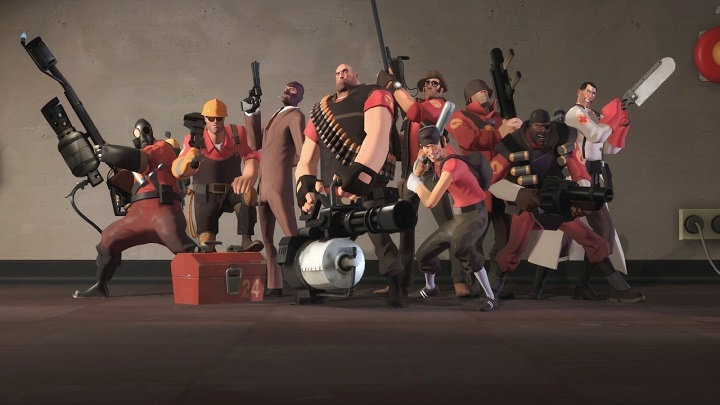Half-Life Devs Live in Their Own Time; 'Summer' Release of CS 2 is No Exception
CS 2 debuted in the summer. At least according to the so-called Valve Time, and that, as usual, has little to do with actual calendar.

"Summer" launch of Counter-Strike 2 is behind us... or at least Valve talked about the game's departure from closed beta testing during the summer. Not that it came as a big surprise, as the developers of Counter-Strike seem to measure time a bit differently than the rest of the world.
Valve time zone
Valve Time is a long-established concept in the gaming industry, almost as much as (former) Blizzard's "it's done when it's done." Gabe Newell's company is known for providing release dates that ultimately have nothing to do with reality.
These are not necessarily delays or exact dates. Sometimes Valve's game would receive an update "in a day or two or a week," but that update would be released within hours of the announcement.
Nevertheless, it is the delays that are most associated with "Valve Time". Or situations where announced content does not reach players at all (at least so far).
Team Fortress 2 launch
- Valve Time: "soon" (1998)
- Actual time: October 2007
Debut of the iconic online shooter is a classic example of "Valve time zone". Paradoxically, in this case, the explanation for the difference of almost 10 years (sic!) is very understandable - Team Fortress 2 was released as a completely different game than what was announced in 1998, with the subtitle Brotherhood of Arms.
The first part of the series had little in common with TF2 as we know it except for the classes, and even these are significantly different from the mercenaries known and loved by the community. The sequel was originally intended to be a realistic military FPS and de facto expansion for Half-Life (to which the first part was a mod). There was also to be a new class: the commander, which would be played like in an RTS.

After two delays (the last in mid-2000; via GameSpot) Team Fortress 2: Brotherhood of Arms joined Prey, Duke Nukem Forever and other games whose release was delayed indefinitely (so-called vaporware).
During this time TF2 was said to have seen at least three different iterations, and it was only in 2006 that Valve reminded of the project's existence (if you don't count assurances that it remains in development), transformed beyond recognition (not for the last time, anyway). Given the cult surrounding not only the game, but also its characters, just in this case "Valve time" had a blessing effect on the game.
Half-Life one, two, three
- Valve time: Second half of 2003 / late 2007.
- Real time: November 16, 2004 / canceled?
Also in the case of second Half-Life the difference between real-life time and Valve time was understandable (and much smaller than with Team Fortress 2). After all, the company was the victim of one of the most notorious hacking attacks in the history of the industry, which resulted in almost all of the code of HL 2 leaking to the web.
The problem is that this early version of Half-Life 2 was clearly unfinished and the game's developers had long known that a late September debut was unrealistic. Frustrated fans commented the event widely online, which effectively undermined the team's morale and slowed down work on the game.
At least we finally got the return of Gordon Freeman, which is more than can be said for the mythical and most likely cancelled Half-Life 3 (or HL2: Episode Three). Already the two first episodes fell victim to Valve time, as did the tech demo of Lost Coast. However, the third one is now unquestionably the best-known example of "vaporware" in the game market - and the crowning evidence of Gabe Newell's aversion to the number 3 (which, by the way, he himself made fun of a few years ago).

It is also appropriate to mention that original Half-Life is perhaps the first example of how "Valve time" works. The title was supposed to hit the market at the end of 1997, but the release was postponed three times before this legendary game finally debuted on November 19, 1998.
Time Portal
In addition to these best-known examples, the list could be extended to include:
- numerous updates, patches and comics related to Team Fortress 2 (with the still unreleased, presumably abandoned Fatty Update at the forefront) and patches for Counter-Strike: Global Offensive and Dota 2;
- the release of Steam on Linux devices;
- launch of Artifact's beta a day earlier than announced;
- the release of Portal 2 and Half-Life Alyx;
- and, of course, the "summer" debut of Counter-Strike 2, which eventually took place on September 27.
True, most of these situations took place years ago. Nevertheless, the example of CS 2 shows that Valve still lives in its own time zone, firmly detached from the actual passage of time.
0

Author: Jacob Blazewicz
Graduated with a master's degree in Polish Studies from the University of Warsaw with a thesis dedicated to this very subject. Started his adventure with gamepressure.com in 2015, writing in the Newsroom and later also in the film and technology sections (also contributed to the Encyclopedia). Interested in video games (and not only video games) for years. He began with platform games and, to this day, remains a big fan of them (including Metroidvania). Also shows interest in card games (including paper), fighting games, soulslikes, and basically everything about games as such. Marvels at pixelated characters from games dating back to the time of the Game Boy (if not older).
Latest News
- Sony is alarming players with an idea that seems to be taken straight from Black Mirror. It's about censoring video games in real time
- Finished script for Bad Company 3 is waiting for a better moment. Lead designer of the second installment points to the only person who can change that
- New on Steam. A free action RPG with unpopular mechanics removed, and an MMO inspired by Tibia
- Chris Sawyer's Locomotion can finally reach it's full potential with new OpenLoco
- Most important question of the series without answer. Only Dead Space 4 could reveal the truth about the Necromorphs


